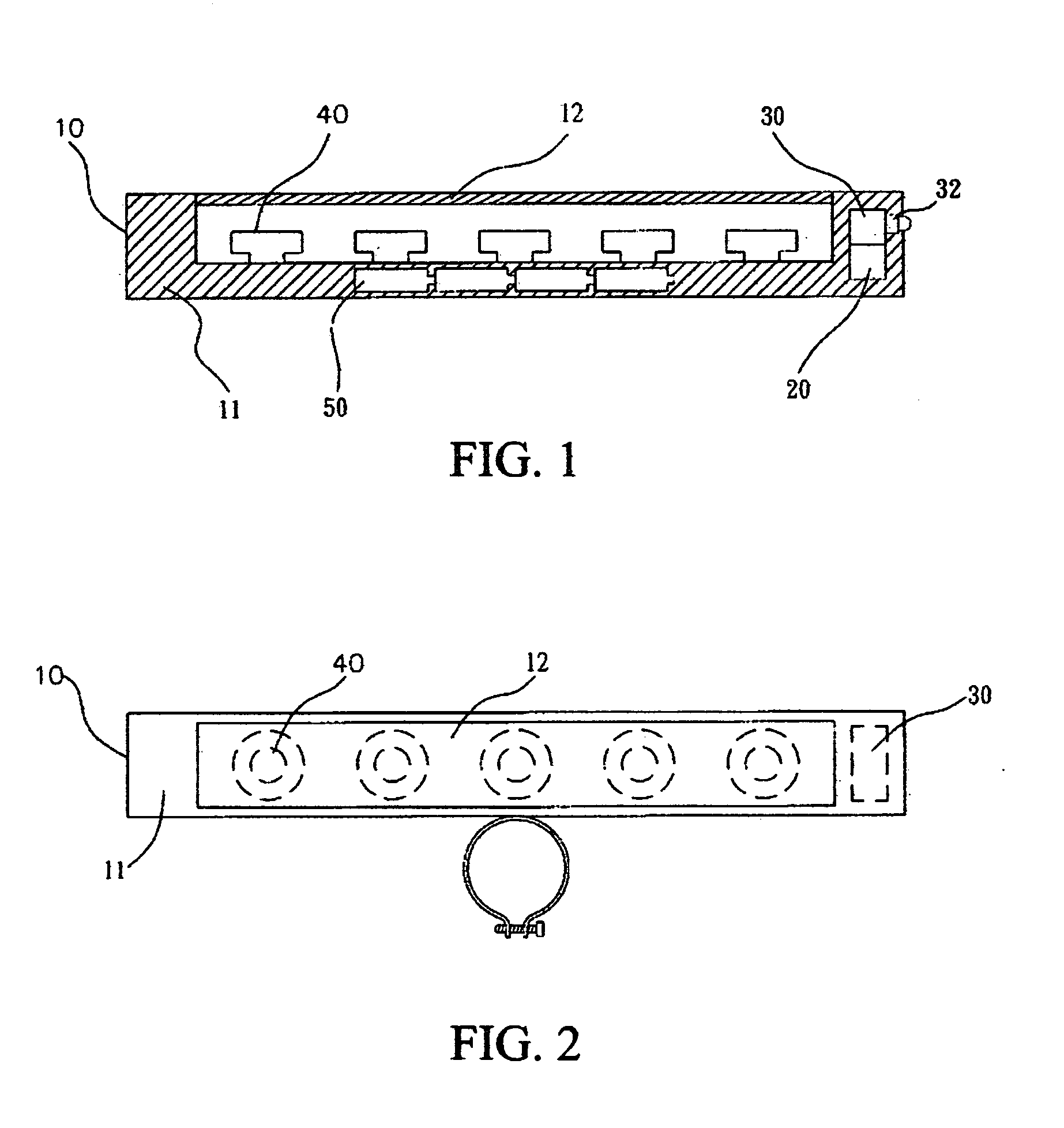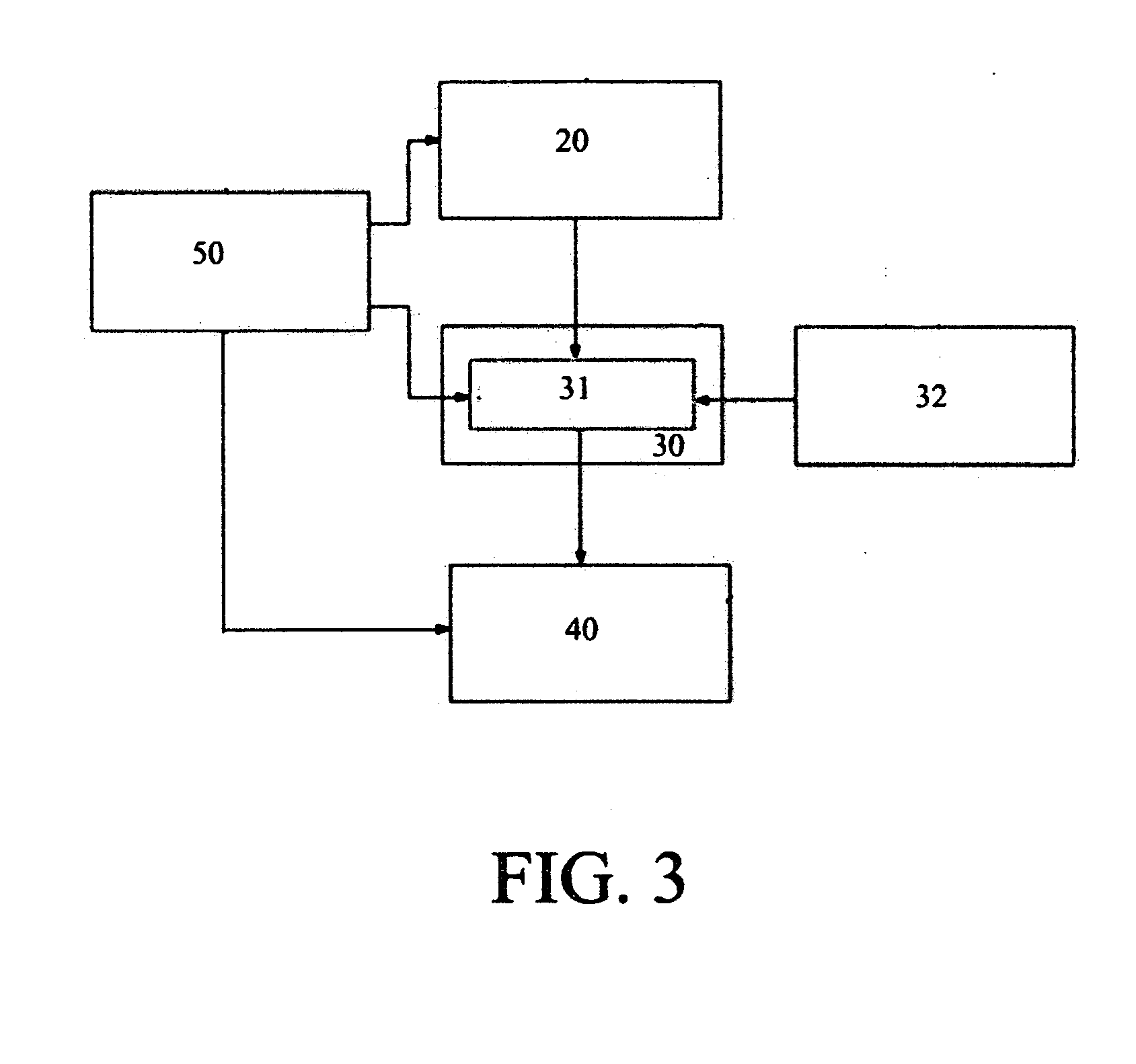Wireless bike brake light
a brake light and wireless technology, applied in the direction of anti-theft devices, cycle equipments, anti-theft cycle devices, etc., can solve the problem of only responsive brake lights, and achieve the effect of low natural mechanical friction and low friction
- Summary
- Abstract
- Description
- Claims
- Application Information
AI Technical Summary
Benefits of technology
Problems solved by technology
Method used
Image
Examples
Embodiment Construction
[0029]In the following descriptions and explanations, reference is made to the In order to understand better, please see following descriptions and explanations for a preferred embodiment with reference to FIGS. 1, 2, and 3. The invention of a wireless bike brake light comprises: a main body 10, an accelerometer 20, a control circuit 30, a lighting device 40, a power 50 and a fixing device 60; The main body 10, comprising a hollowed body base 11 and a transparent cover 12, is used to contain and protect the accelerometer 20, the control circuits unit 30, and the lighting device 40.
[0030]The accelerometer 20 is MEMS-structured and chip-shaped, which actually outputs a mixed signal of G-force and acceleration / deceleration conditions of bikes (Ex. if G-force exerted is −0.3 G and the bike accelerates at +0.5 G, then the accelerometer would output a signal magnitude equaling to +0.2 G) to the control circuits unit 30 for further analysis.
[0031]The control circuits unit 30 comprises a sw...
PUM
 Login to View More
Login to View More Abstract
Description
Claims
Application Information
 Login to View More
Login to View More - R&D
- Intellectual Property
- Life Sciences
- Materials
- Tech Scout
- Unparalleled Data Quality
- Higher Quality Content
- 60% Fewer Hallucinations
Browse by: Latest US Patents, China's latest patents, Technical Efficacy Thesaurus, Application Domain, Technology Topic, Popular Technical Reports.
© 2025 PatSnap. All rights reserved.Legal|Privacy policy|Modern Slavery Act Transparency Statement|Sitemap|About US| Contact US: help@patsnap.com



